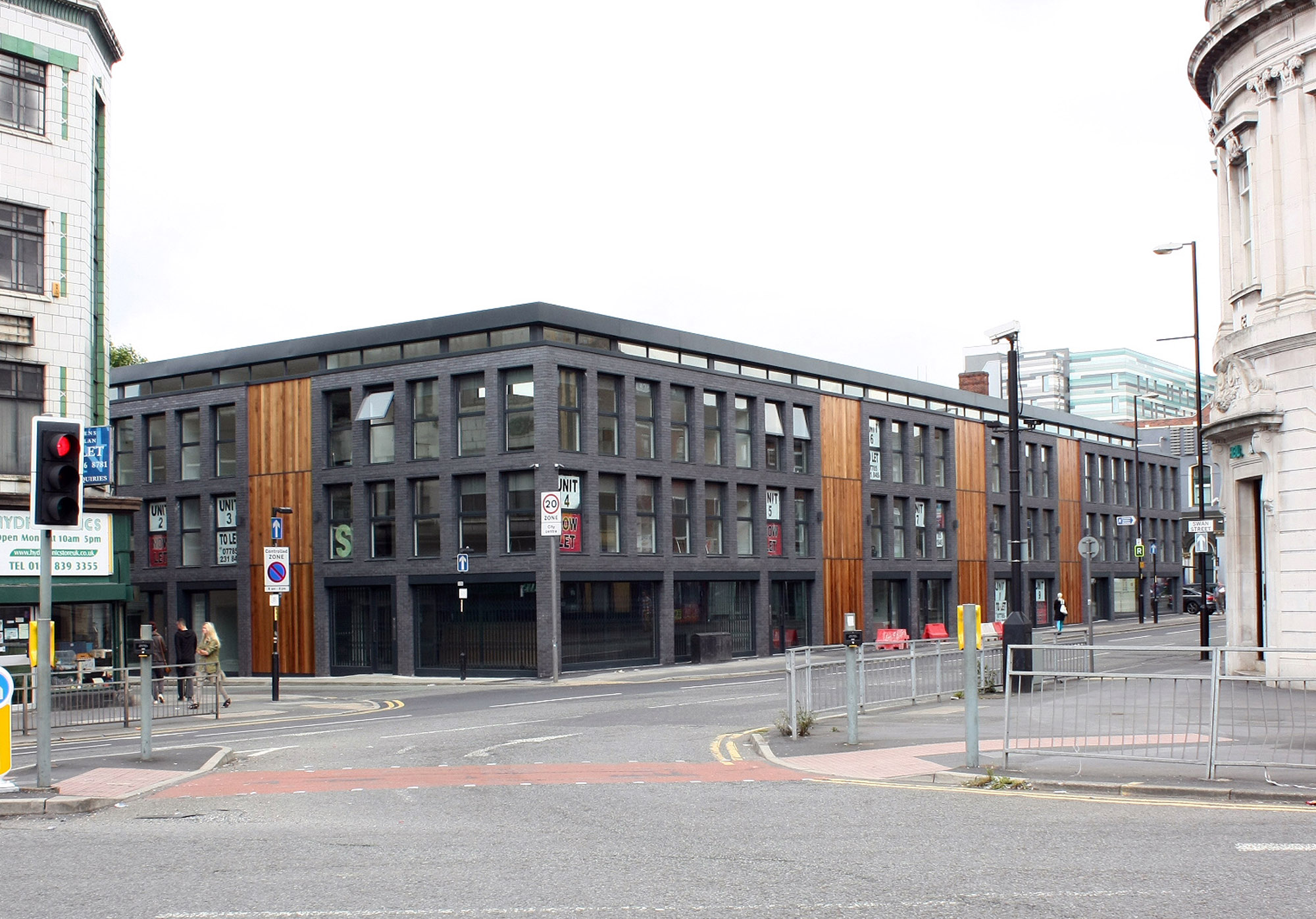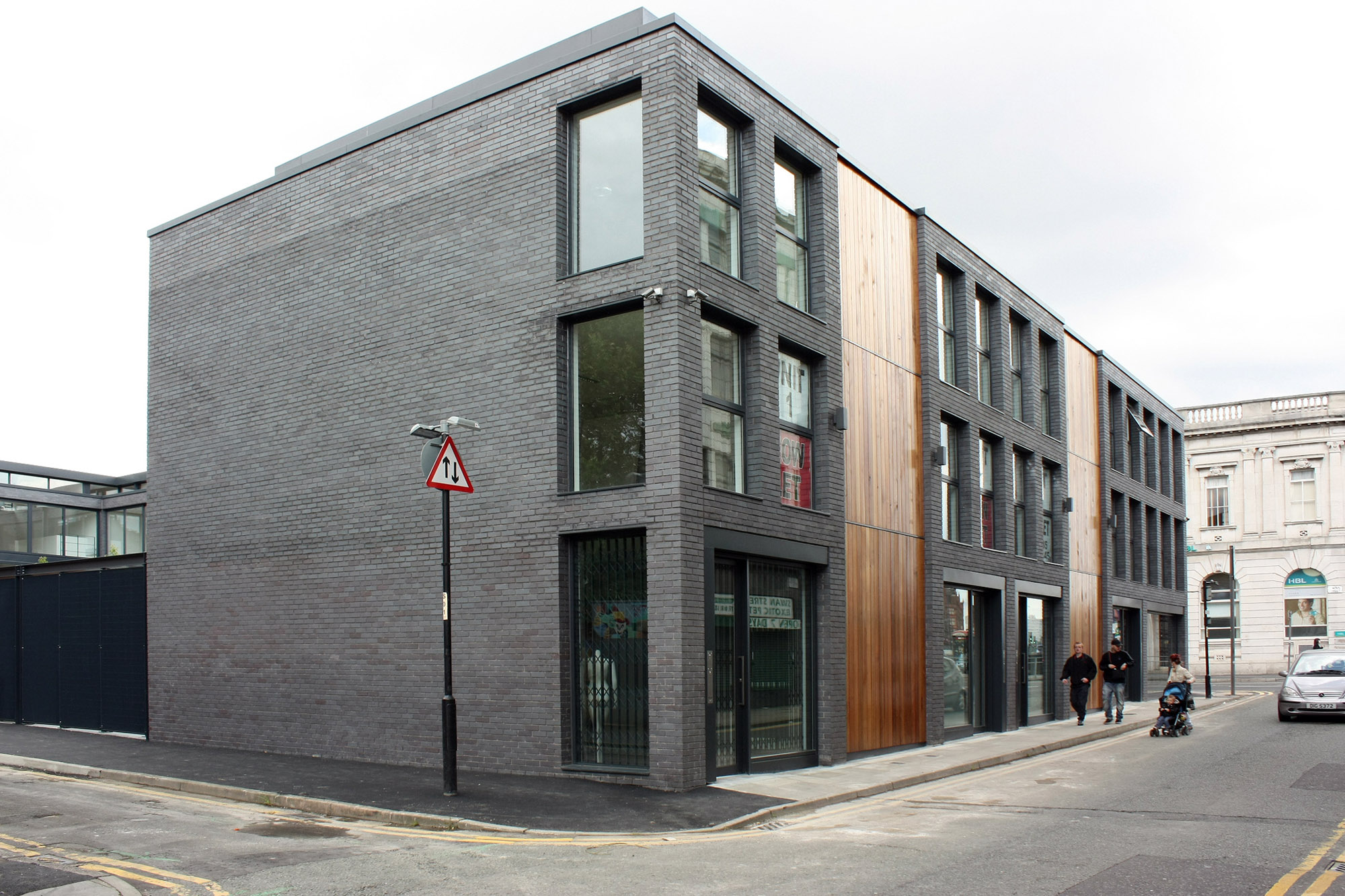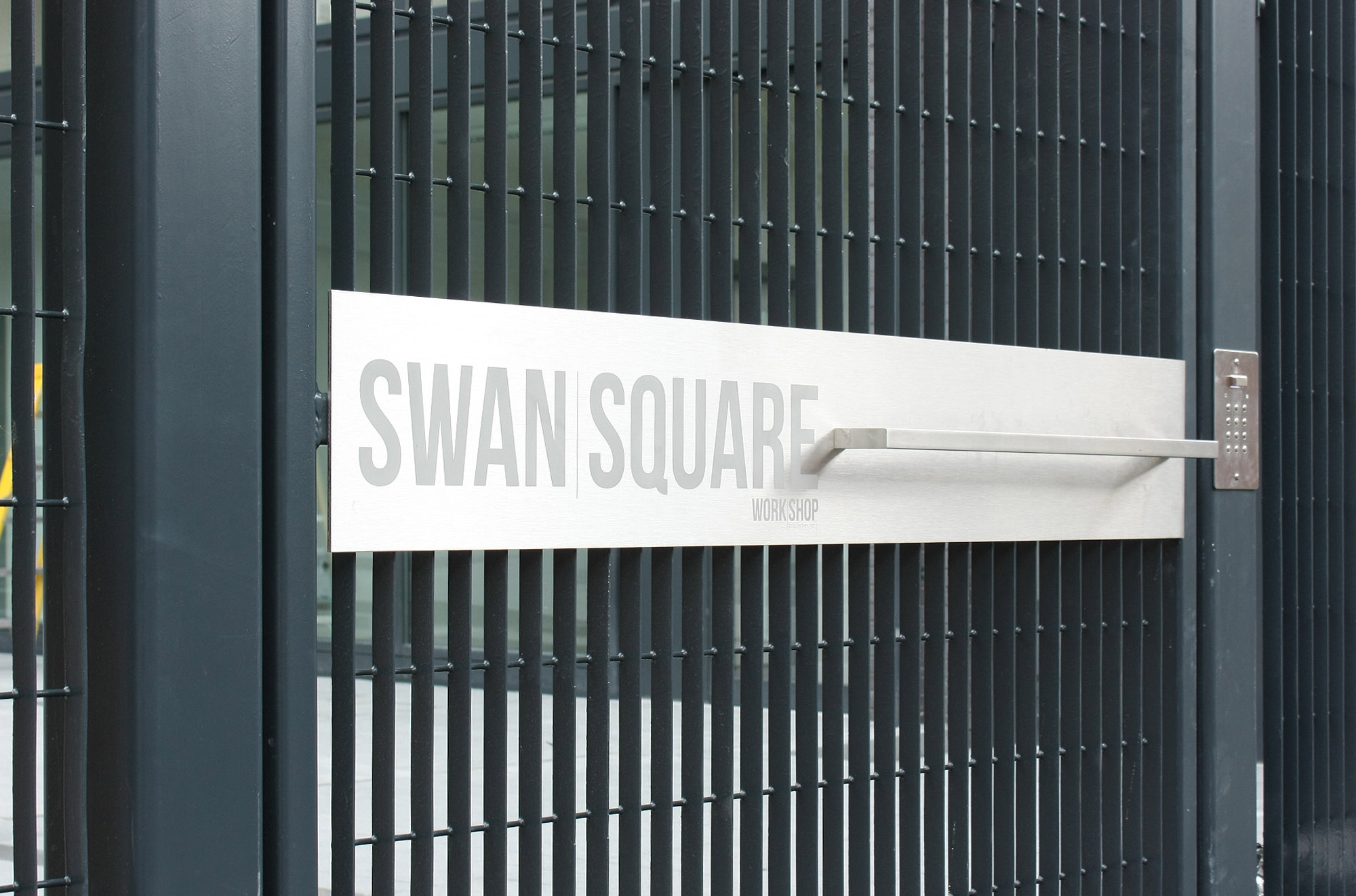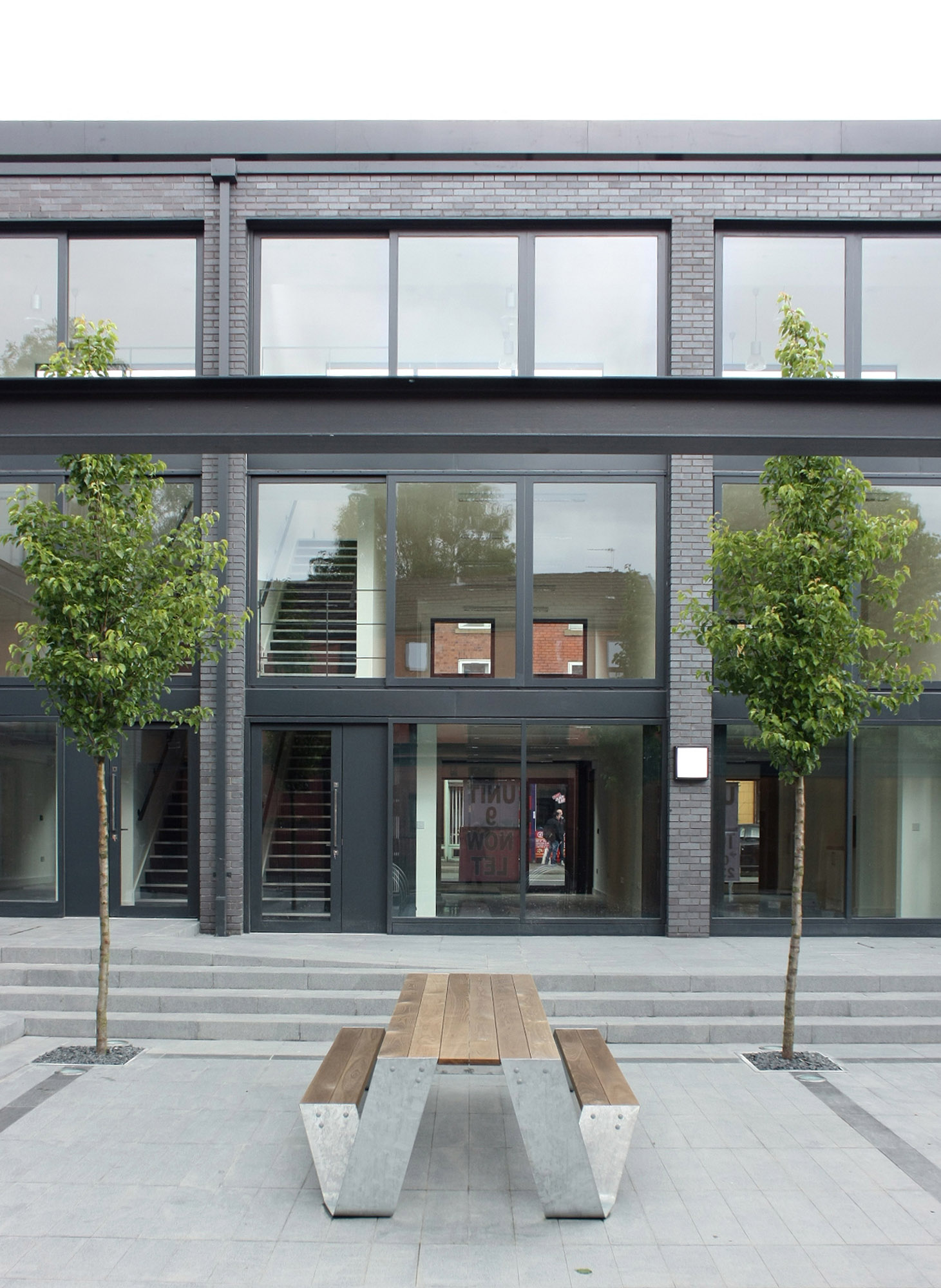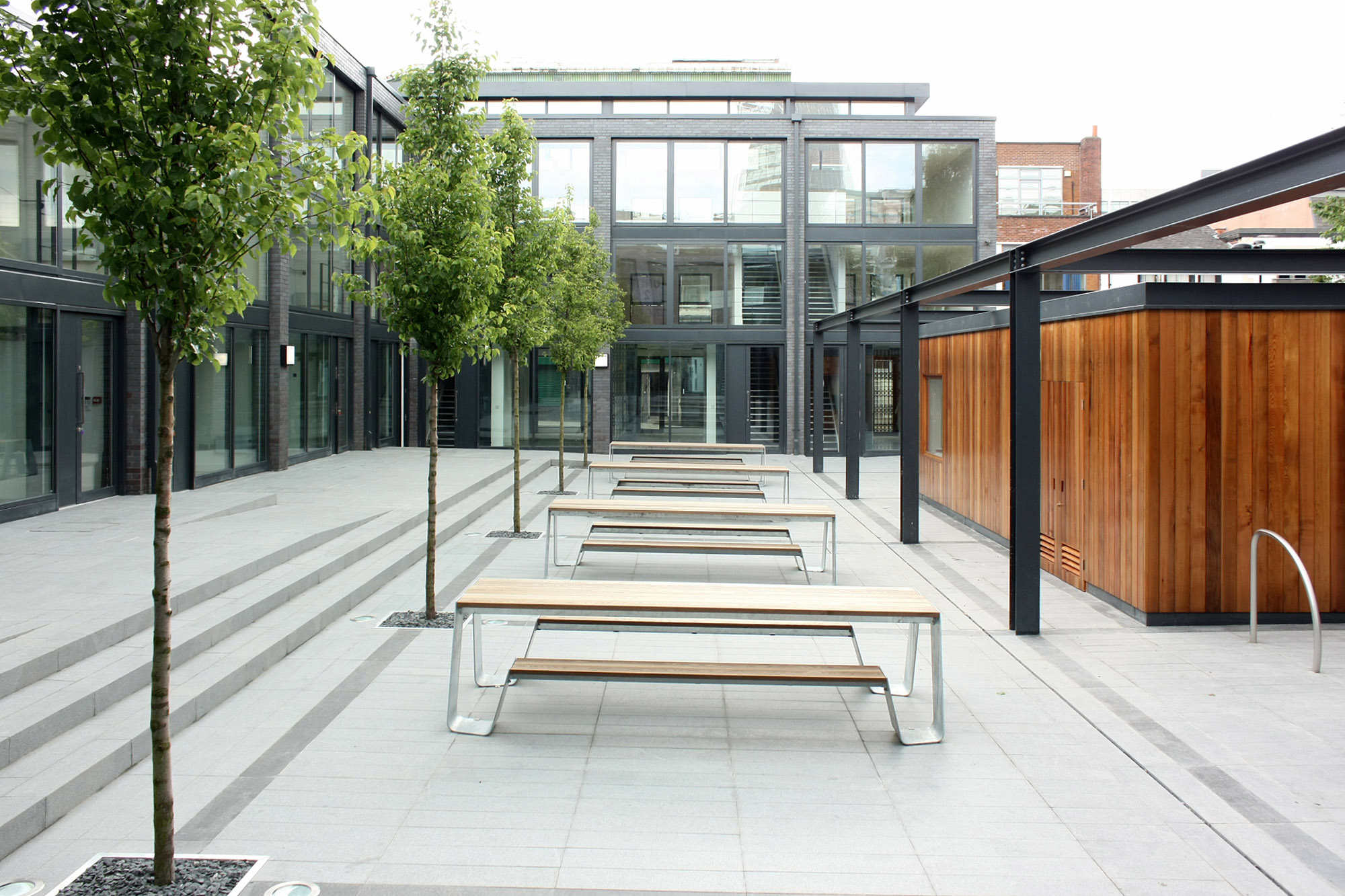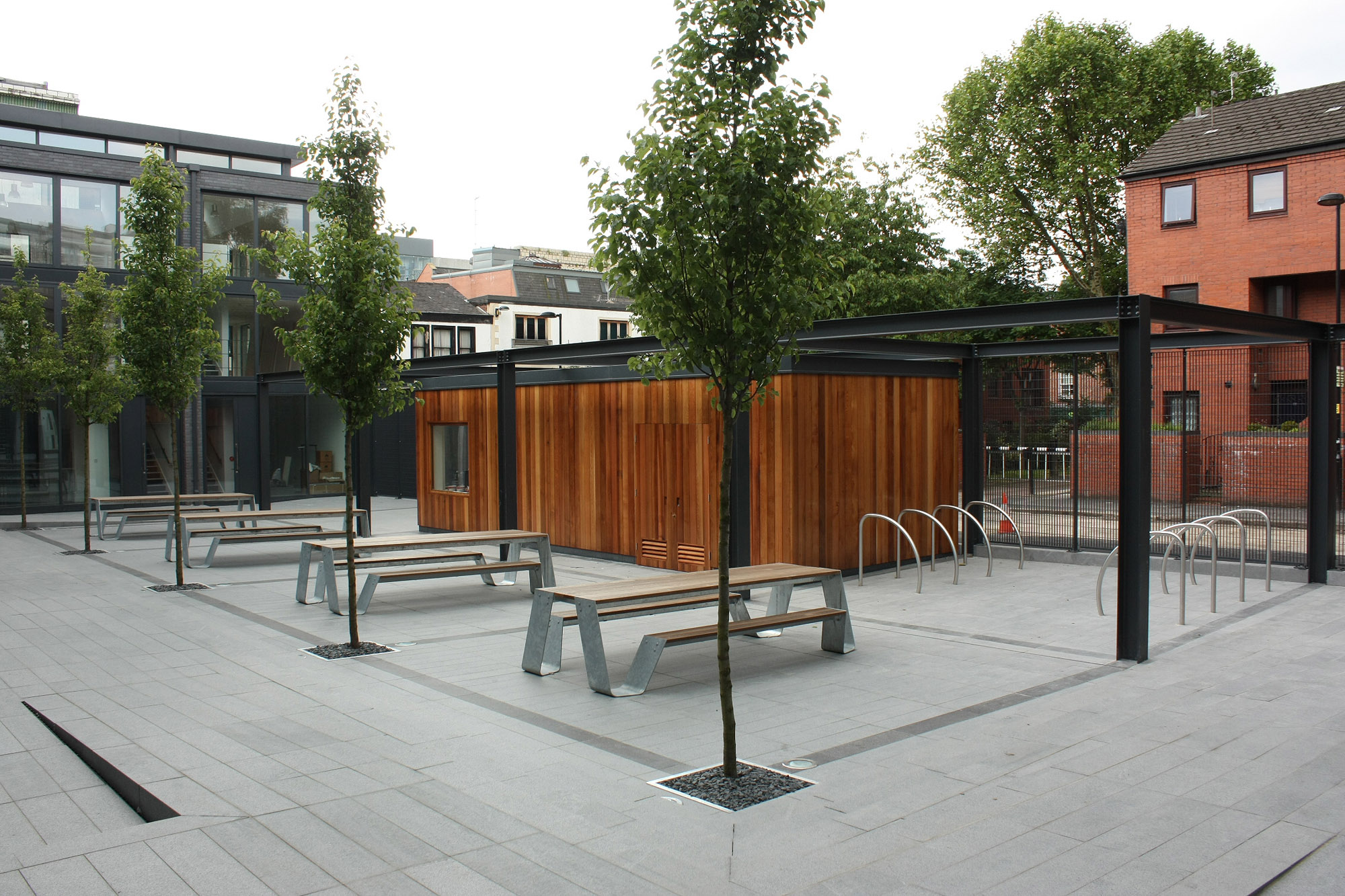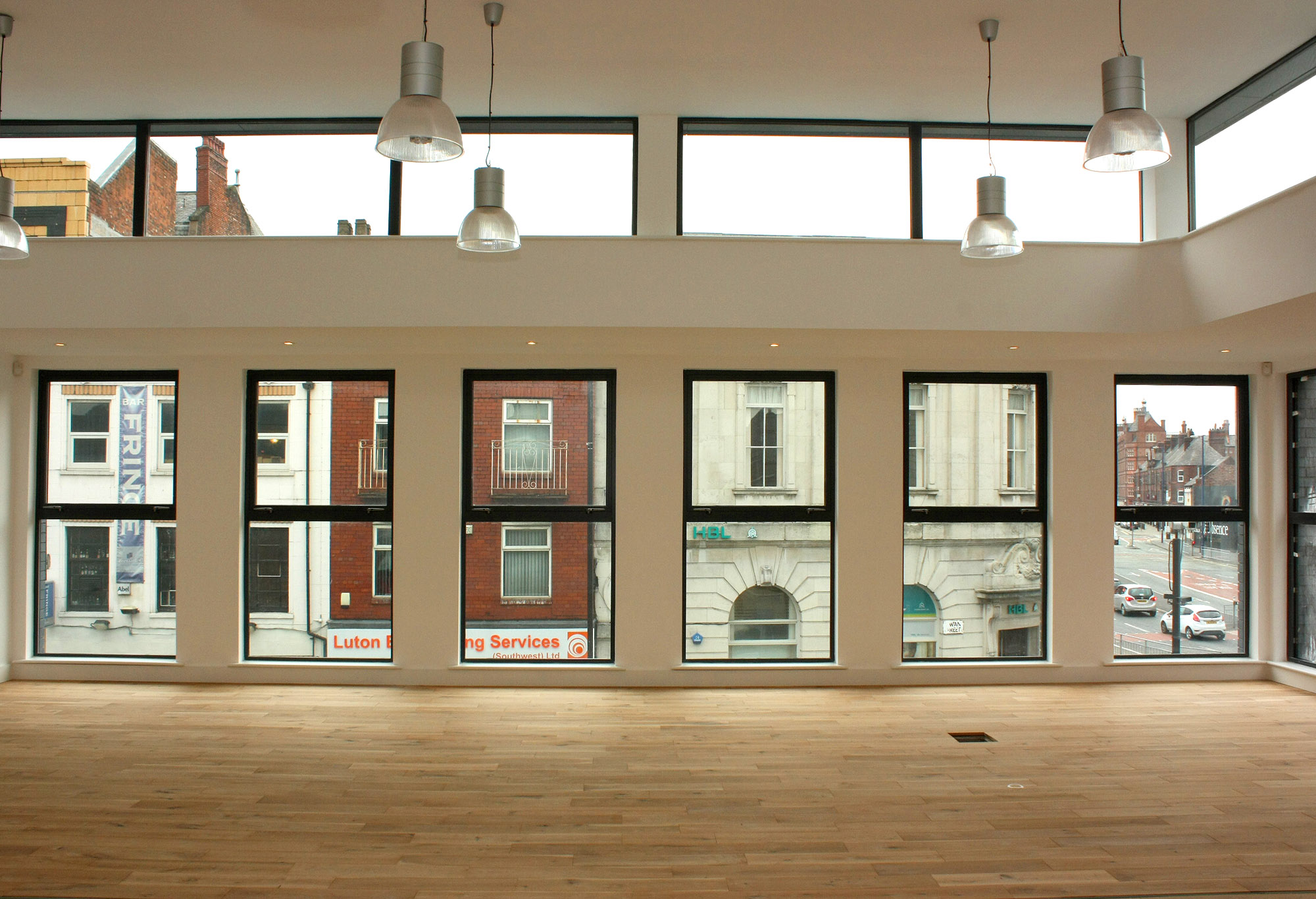Swan Square
- Home
- /
- Portfolio
- /
- Workplaces
- /
- Swan Square
- Project
- Swan Square, Swan Street, Northern Quarter, Manchester
- Type
- Small Self-contained Office Units
- Status
- Completed 2012
- Awards
- Winner of the RIBA North West Regional Award 2013
- Commendation in the Manchester Society of Architects Design Awards, Commercial Category 2013
This building forms part of the Smithfield Conservation Area in the Northern Quarter area of Manchester. It is designed to respect and be informed by the immediate context such that it enhances the character of the area. The design solution is for self contained small office units arranged around an enclosed courtyard. These small units with their own front door have proved very popular in our similar Hilton Square project, with very obvious demand and occupation by flourishing creative businesses.
The appearance of the building emerges as a contemporary re-working of a traditional building typology, in essence a continuous terrace block sub-divided by internal cross walls to form these independent units over three floors. Whilst the form, scale and layout of the building have been strongly influenced by the character and appearance of the surrounding area, the proposed scheme represents a contemporary design solution rather than pastiche mimicry of its historic buildings.
The elevational treatment reflects the two sides of the scheme. Brickwork with punched openings to Swan Street, with a more open, glazed approach to the rear south-facing courtyard. The identifiable base, middle and top portions, formed by the large windows and double-entrance doors at ground floor level, tall vertical windows set within deep reveals at first and second floor levels and horizontal glazing bands at the roofline, reflect Georgian and Victorian design philosophies and gives significant articulation to the building’s principal elevations.
Now the winner of three prestigious design awards. Here’s what the RIBA judges said. ‘Certain buildings set about their work with self-assured, quiet dignity. Swan Square is one of those. Now fully occupied, this well-considered series of three-storey start-up units is the perfect example of how to re-establish and invigorate and unloved and forgotten area of the city’s fabric.’
Here’s what Manchester Confidential had to say. The building ‘is exemplary in the way it fits with the scale of the older buildings around this area, reintroducing unbroken terraces in a concise, precise and yet very modern manner.’

